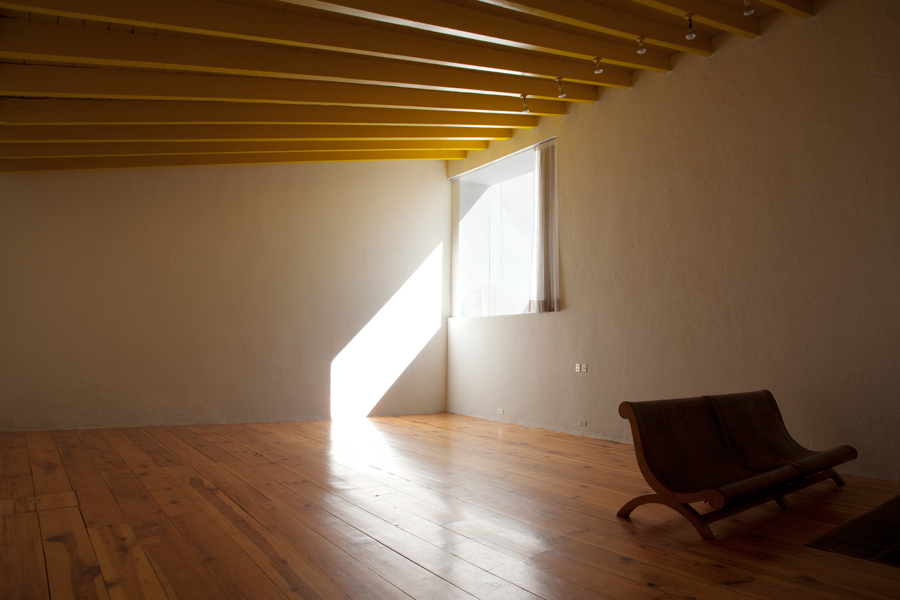Oh Mother Nature
In a year marked by natural disasters, some of the best exhibitions in Latin America were attempts to make sense of the environment
In a year marked by natural disasters, some of the best exhibitions in Latin America were attempts to make sense of the environment

2017 was one of those years in which Mother Nature made her point: ravaging floods, roaring earthquakes and wildfires scorching thousands of acres of land. Seen in this light, some of the year’s best exhibitions in Latin America seemed like attempts to make sense of the environment. That was the case of ‘Segundo Coloquio Latinoamericano de Arte no-objetual y Arte Rural (Second Latin American Colloquium of Non-Objectual and Rural Art)’, organized by the Museo de Arte Moderno de Medellín (MAMM) in Colombia under the direction of Sofía Hernández Chong Cuy. More than 30 years after the mythic and radical 1981 ‘Primer Coloquio’ – which articulated Latin American contemporary art models and performative practices for an urban setting – Hernández Chong Cuy convened a number of scholars, curators and artists around a slightly shifted focus: art and social action in a semi-rural context, in particular Medellín’s Jardín Circunvalar, or Green Belt.

The colloquium organized several projects in collaboration with the Jardín Circunvalar’s hillside community: Colombian artist María Buenaventura prepared a meal that merged ancient traditions with local products, and served locals alongside an agronomist and others, exploring the role art and nature have played in different processes of social interaction and cohesion. Guatemalan artist Naufus Ramírez Figueroa’s 2008 performance Para tí el banano madura al peso de tu dulce amor (For You the Banana Ripens to the Weight of Your Sweet Love) was restaged in the lobby of MAMM, where a young man slept all afternoon for two weeks, clutching a bunch of bananas until the warmth of his body made them ripen. This simple, protective gesture toyed with Central American clichés – propagated by the United Fruit Company in Guatemala – and referenced the importance of resource extraction to the continent’s economic and political history, in a loving yet ineffectual attempt to heal that history’s wounds.

Much of Ramírez Figueroa’s work is imbued with a kind of futile nostalgia for the lost innocence of childhood. The same could be said, in a more satirical vein, of ‘How to read El Pato Pascual: Disney’s Latin America and Latin America’s Disney’, an exhibition curated by Rubén Ortíz Torres and Jessie Lerner at the MAK Center for Art and Architecture, Los Angeles, as part of ‘Pacific Standard Time: LA/LA’. More critical than sentimental, the show is a revision of the political role played by the Walt Disney Corporation and its various cartoon characters, first as pawns of Theodore Roosevelt’s ‘good neighbor policy’ and later as more overt vehicles for North American cultural imperialism. The parade of Mickey and Minnie mice, Donald Ducks and the like that appear in the exhibition’s works offer new insight on the role these characters have played south of the US border, such as Beach, Umbrella, Rafael Montañés Ortiz’s nightmarish 1985 film in which The Three Caballeros dive-bomb over a crowded and sunny Brazilian beach in a flying zarape.

A similar sense of gloom hung over Mexican artist Guillermo Santamarina’s recent exhibition at House of Gaga, Mexico City, ‘Funkadelic’s Parliament (or the de(re)valued insignias)’, which convened gothic literary and musical references. The show opened with El corazón es un cazador solitario (The Heart is a Lonely Hunter, 2017), a painting of a singing swan bearing the name ‘J. Singer’, for the deaf and isolated protagonist of Carson McCullers’ eponymous book – a dark omen of the bird’s final gesture when it realizes its time has come. Santamarina produced the exhibition’s titular work in collaboration with troubled teenagers, who cut up his neckties to weave a large patchwork curtain for the space – a gesture of solidarity amidst desolation.

The opening of Santamarina’s show was postponed after a major earthquake struck central Mexico in September, just before Gallery Weekend. A spate of other exhibitions and performances followed suit, including ‘Comedia sin solución (Comedy with no Solution)’, a short play written in 1927 by Mexican writer German Cueto and directed by Colombian Eduardo Donjuan at Casa Luis Barragán. As if mirroring the earthquake’s destruction and aftermath, it staged an existentialist conversation between three strangers that, for no apparent reason, happen to be trapped in complete darkness, their dialogue accompanied by a moaning choir. As the play suggested, in such traumatic situations, we can either submit to the seemingly arbitrary nature of disaster and come to terms with our human vulnerability, or accept responsibility as stewards of the planet, and each other.
Main image: View from a picnic in the Jardín Circunvalar, Medellín, 2017 as part of the ‘Segundo Coloquio Latinoamericano de Arte no-objetual y Arte Rural (Second Latin American Colloquium of Non-Objectual and Rural Art)’, organized by the Museo de Arte Moderno de Medellín (MAMM). Courtesy: the author























